Xiaomi Mi 3 - A Flagship Smartphone That Doesn't Cost a Bomb
The Mi 3 is Xiaomi's current flagship smartphone with an affordable price tag. Equipped with all the linings of a top device like a 5-inch Full-HD IPS display, Qualcomm Snapdragon 800 quad-core processor and a 13MP rear camera, can the Xiaomi Mi 3 stand up against other Android flagship smartphones? We spill the beans.
By HardwareZone Team -
Overview
Xiaomi may be a new player in the mobile scene here, but its marketing strategies and presence do not go unnoticed. Its midrange smartphone, the Redmi, is so popular among consumers in Singapore that the first batch of stocks ran out in 8 minutes on February 21. The second batch released six days later was snapped up in 6 minutes.
It's not hard to guess why the Redmi sold like hotcakes; it presents itself as an extremely good value for money smartphone and delivers good performance for its price point. Its flagship smartphone, the Mi 3 is selling very well in the Chinese market too. Here's a quick overview of its sales figures for the past few months:
- 100,000 units were sold out in less than two minutes (to be exact, 86 seconds or 1 minute and 26 seconds) on October 2013
- 150,000 units were sold in 9 minutes and 55 seconds on WeChat
- 50,000 units were sold out in 4 minutes and 59 seconds on January 7
The Mi 3 will be available for purchase tomorrow on Xiaomi Singapore website. Will history repeat itself? Before we contemplate that question, let's take a look at what the Mi 3 has to offer and how it stands among the other Android flagship smartphones.

The Mi 3 (front) is the flagship smartphone for Xiaomi while the Redmi (behind) is the midrange smartphone.
Design and Handling
Upon first handling the Mi 3, we felt that it had an uncanny resemblance to certain phones that we've reviewed. It took us quite a while to figure it out, and perhaps you may disagree with us, but the Mi 3 has a similar feel to Nokia's Lumia devices.
The curvy sides of the Mi 3 and the speaker grille at the center bottom section are design trademarks of Nokia Lumia smartphones, especially the older models such as the Lumia 800 and 900. As such, you can expect its handling to be fairly good and perhaps even a tad better than the Lumia devices considering the Mi 3 is quite sleek at 8.1mm and weighs 145g. It is even lighter than the 4.7-inch Redmi which weighs in at 158g.

The Xiaomi Mi 3 (bottom) has similar design attributes as the Nokia Lumia 900 (top) such as the curved sides and speaker grille.

The Xiaomi Mi 3 has a flatter design compared to the Redmi which has a slightly tapered back.
As a flagship smartphone, the build quality and design of the Mi 3 is obviously a rank better than that of the Redmi, and can rival most of the Android flagship smartphones except the ASUS PadFone Infinity and HTC One which have an aluminium unibody that looks and feels premium. Having said that, on first appearances, the Mi 3 also seemed to have an aluminum back. Looks can be deceiving, so we clarified it with Hugo Barra himself and confirmed that it is actually plastic. Yes, you read that right - it's not metal.
According to Xiaomi, the chassis has an internal magnesium alloy structure encased in three layers of graphite. This gives the Mi 3 a solid feel and a "metallic" appearance. The sandblast finish further helps to keep the Mi 3 looking clean even after using it for a week; fingerprints and smudges aren't obvious and to most, you probably can't spot it.

Looks can be deceiving; the Xiaomi Mi 3 does not have a metal rear. It's actually plastic.
Unlike the Redmi, the Mi 3 does not have a removable back cover and battery. Perhaps Xiaomi wants to maintain the elegant design of the phone and does not want a removable cover to break the uniformity. The normal-sized SIM card slot can be found at the top center section of the Mi 3. There is also no memory card slot to further augment the 16GB internal storage capacity of the Mi 3. Out of the box, the Mi 3 comes with 12.28GB of available storage space to install apps and store multimedia files.

Most Android smartphones today use micro-SIM cards and the Xiaomi Mi 3 is an exception to the rule. It uses a standard sized SIM card. Seen here is a micro-SIM card in a black SIM card adapter.
The Mi 3 also has the standard three capacitive navigation buttons located below the display, but unlike the value-oriented Redmi device, Mi 3 comes with backlighting. You can turn it off or determine the duration of the the backlight if you think it is unnecessary or further preserve power draw. You can access these options via Settings > Buttons > Button Light or Button Light Settings.
The small notification LED that resides below the home button on the Redmi is shifted to the right side of the front-facing camera above the display. You can set it to light up in any of the 7 colors (blue, red, yellow, green, cyan, white and violet) for notifications, calls and messages.
5-Inch Full-HD IPS Display
The Mi 3 comes with a 5-inch Full-HD (1,920 x 1,080 pixels) IPS display, which is on-par with almost all the Android flagship smartphones we've seen so far including the recently announced Samsung Galaxy S5 and Sony Xperia Z2.
We find the display to be as good as most of its competing peers, but it is not as bright as some of the other phones. In addition, its anti-glare coating appeared to be ineffective when using the phone outdoors as we had to bump up the brightness to 100% to read content comfortably.
Xiaomi also includes a Glove mode for the Mi 3, which makes the display more sensitive; this allows you to navigate the interface even when wearing gloves, ideal in harsher temperate climate. This feature can be enabled via Settings > Display > Glove mode. You can also adjust the color temperature and saturation of the display, an option that is also present in some Samsung mobile devices.
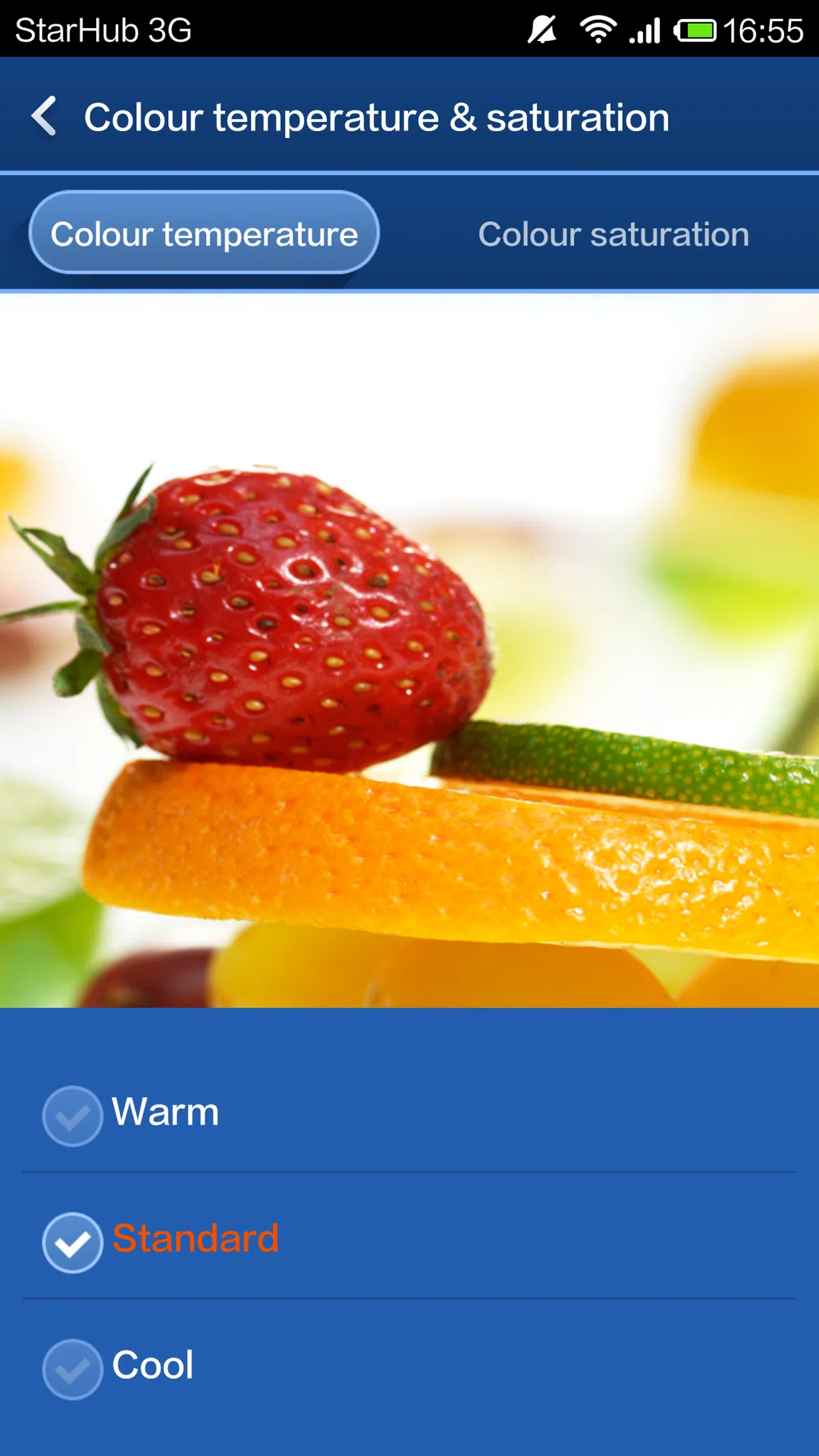 | 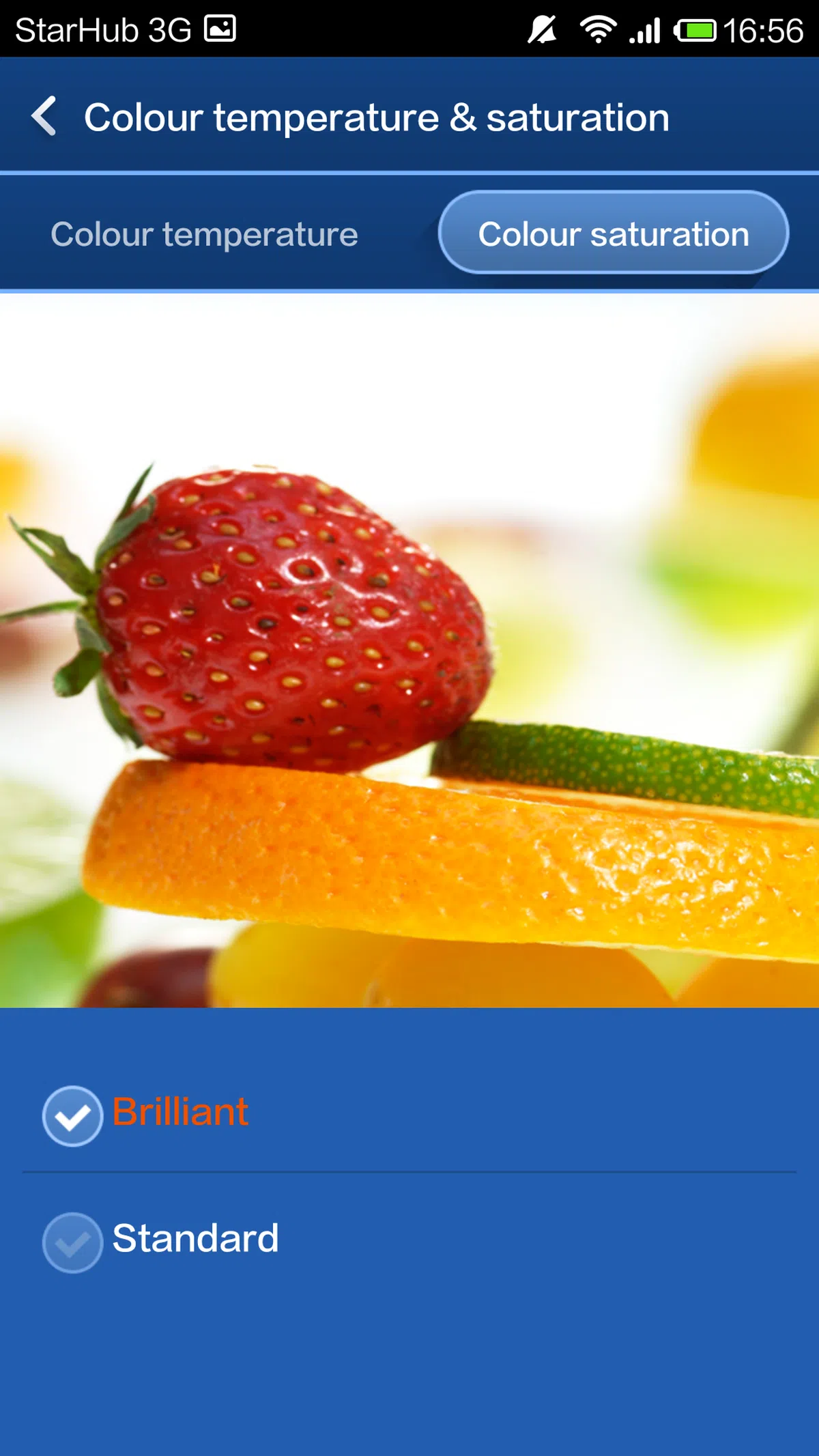 |
Software Features
The Mi 3 ships with MIUI V5 OS (JXDSGBA8.0) which is based on Android 4.3 Jelly Bean. We've a detailed explanation on what is MIUI and the top five features of the platform in our review of the Redmi device, which also uses the same OS. As such, we will not be discussing these aspects again. Since MIUI is a new interface for most users in this part of the world, we're currently working on a separate article to explore more features of MIUI V5. Stay tuned to HardwareZone for more information on that next week!
Performance Benchmarks
The Mi 3 is powered by the Qualcomm Snapdragon (MSM8274AB) quad-core 2.3GHz processor and 2GB RAM. For your information, the MSM8274AB processor is part of the Snapdragon 800 family which also includes the following common part numbers 8074, 8674 and 8974. You can refer to Qualcomm's site for more info.
The LG Nexus 5 and Samsung Galaxy S4 with LTE+ run on the MSM8974 processors. Without going too much into the technicalities of the different model numbers, the MSM8274AB only supports HSPA+ network while the MSM8974 generally supports 4G LTE networks. Therefore, the Mi-3 is not a 4G LTE-enabled smartphone.
We will be comparing the Mi 3 against the other phones of its class which it competes against. The list will include the ASUS PadFone Infinity (late 2013), LG Nexus 5, Samsung Galaxy S4 with LTE+ and Sony Xperia Z1.
Quadrant Results
Quadrant evaluates a device's CPU, memory, I/O and 3D graphics performances.

The Mi 3 held up pretty well against the other Android flagship smartphones with the second highest score of 21,439 in the Quadrant benchmark. The near-stock Android interface running on the PadFone Infinity might have contributed to a better performance.
3DMark (2013)
Originally developed as a PC benchmarking tool, 3DMark is now expanded to support multiple platforms including Android OS. The Ice Storm benchmark is designed for smartphones, mobile devices and ARM architecture computers.
For an in-depth understanding of 3DMark for Android, do head over to our article, "3DMark - Android Device GPU Performance Review." In a nutshell, 3DMark consists of three test sections:
3DMark Ice Storm is an OpenGL ES 2.0 benchmark test that uses fixed off-screen rendering at 720p then scales the output to fit the native display resolution of your device. Ice Storm includes two graphics tests designed to stress the GPU performance of your device and a physics test to stress its CPU performance.
3DMark Ice Storm Extreme raises the off-screen rendering resolution to 1080p and uses higher quality textures and post-processing effects to create a more demanding load for the latest smartphones and tablets.
3DMark Ice Storm Unlimited is used to make chip-to-chip comparisons of different chipsets, CPUs and GPUs, without vertical sync, display resolution scaling and other operating system factors affecting the result.
Almost all the recent flagship smartphones maxed out the scores for the Ice Storm and Ice Storm Extreme, hence we will only be looking at the scores for Ice Storm Unlimited.

Without other factors affecting the outcome, the Mi 3 emerged top in the 3DMark Ice Storm Unlimited benchmark which is followed closely by the Samsung Galaxy S4 with LTE+.
SunSpider Javascript
SunSpider Javascript measures the browsing performance of a device. It not only takes into consideration the underlying hardware performance, but also assesses how optimized a particular platform is at delivering a high-speed web browsing experience.

The Mi 3 clinched another victory over its peers in the SunSpider Javascript 1.0.1 benchmark. In fact, the Mi 3 replaced the Nexus 5 with the best performance of any Android device to-date.
Real World Usage Experience
Number crunching aside, the Mi 3 generally felt smooth. While its responsiveness is certainly faster than Redmi on all fronts thanks to the Snapdragon 800 processor and 2GB RAM, the Mi 3 still feels a tad slower than the Nexus range of devices, which still deliver the smoothest Android user experience thus far.
The power setting on the Mi 3 was set at Balance mode most of the time, although while we were at Mobile World Congress (MWC) 2014 last week, we used the phone on Battery Saving mode. Unfortunately, when using the Battery Saving mode, slow down in operation was noticeable when accessing apps. For example, it took at least one second longer for the Mi 3 in battery saving mode to load the Play Store, Gmail and Pulse News Reader as compared to Balanced and High Performance modes.
Imaging Performance

The image quality is expected of a 13-megapixel camera. In our standard photo test, we observed plenty of details captured with minimal noise.
We took the Mi 3 for a spin while we were at MWC 2014 and these are some of the photos taken in auto mode, full screen 16:9 imaging ratio and at standard picture quality setting. The photo samples we use have not been post-processed and are copyright to SPH Magazines. They are provided for your reference and we ask that you do not reproduce them elsewhere.

Normal day time shot. <br> Xiaomi Mi 3, f/2.2 at 3.51mm, 1/100 sec, ISO 100.

Evening shot. <br> Xiaomi Mi 3, f/2.2 at 3.51mm, 1/17 sec, ISO 900.

Night shot. <br> Xiaomi Mi 3, f/2.2 at 3.51mm, 1/14 sec, ISO 1600.

Left: Normal (non-HDR) Right: HDR, <br> Xiaomi Mi 3, f/2.2 at 3.51mm, 1/667 sec, ISO 100.
For a full resolution photo of the HDR and non-HDR image above, click here. (1) non-HDR and (2) HDR.
Overall, you can tell that imaging quality is pretty good without much noise observed from the captured shots, even in darker ambiance.
Battery Performance
Our standard battery test for mobile phones includes the following parameters:
• Looping a 800 x 480-pixel video with screen brightness and volume at 100%
• Wi-Fi and Bluetooth connectivity turned on
• Constant data streaming through email and Twitter


Even though the Mi 3 has the largest battery capacity among the phones compared, it did not last the longest in our video looping battery test. It only managed five hours and 44 minutes in our battery test, which is about average from the list of other phones compared. For your information, the power setting of the phone was set to Balanced mode.
The crux of the issue seemed to be the phone's high power draw, in some cases nearly twice as much as its competitors. It's strange to see the Mi 3 drawing so much more power despite sporting the same 5-inch Full-HD display and the same family of Snapdragon 800 processors. Could the device be more optimized for performance and thus the higher benchmark results seen earlier? It's a possibility, but a the moment, the phone's battery life is just average.
Portability
We measure the portability of a device by calculating its battery life to (weight x volume) ratio. Due to its average battery life, the Mi 3 ranked second last in the Portability Index even though it is one of the slimmest and lightest phones.

Real World Battery Performance
But benchmarking gives only one view to the above assessment. To give you a more realistic understanding on how the Mi 3 fared under real world usage conditions, we included screenshots of the usage and history graphs based on our usage.
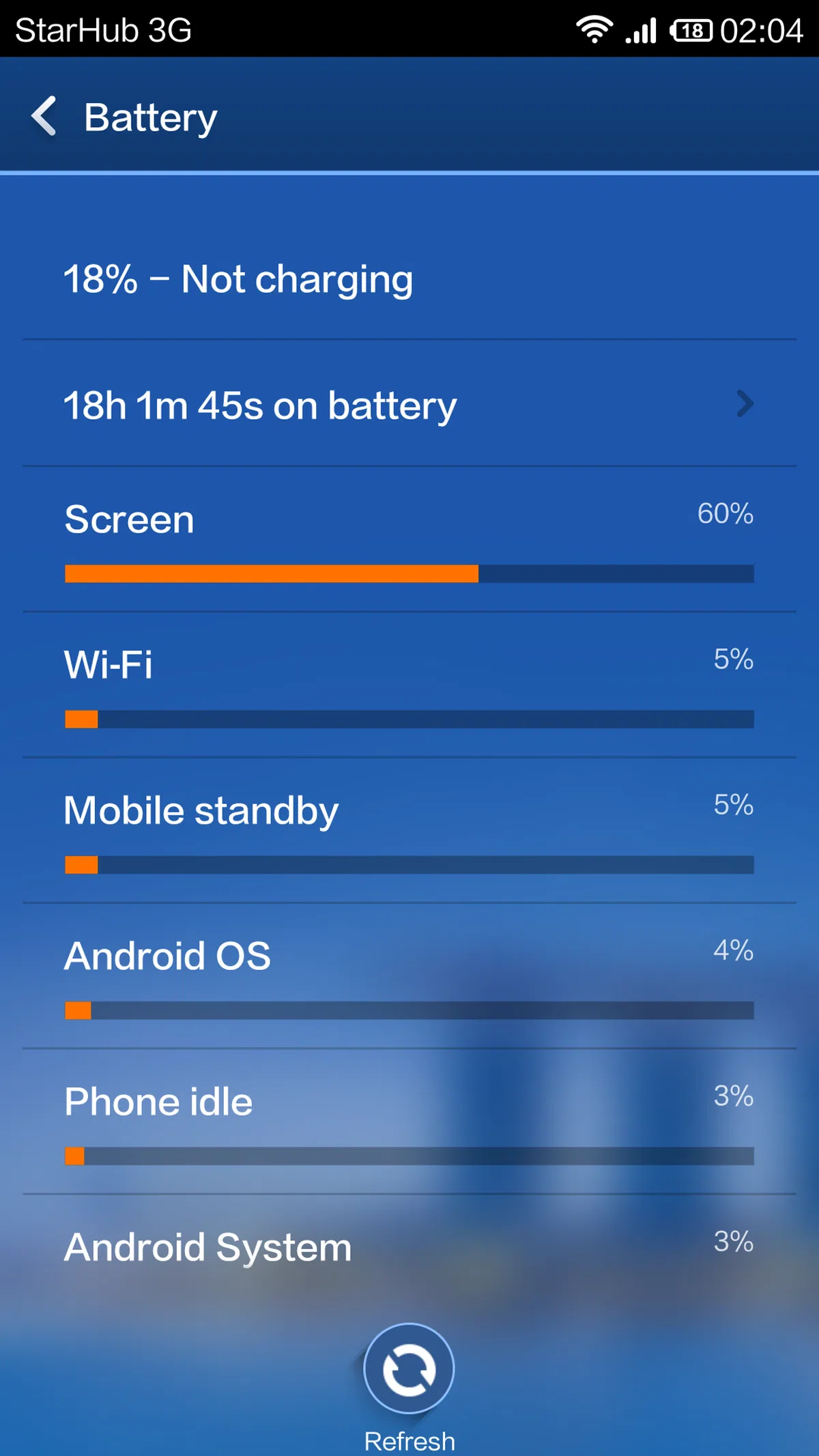 | 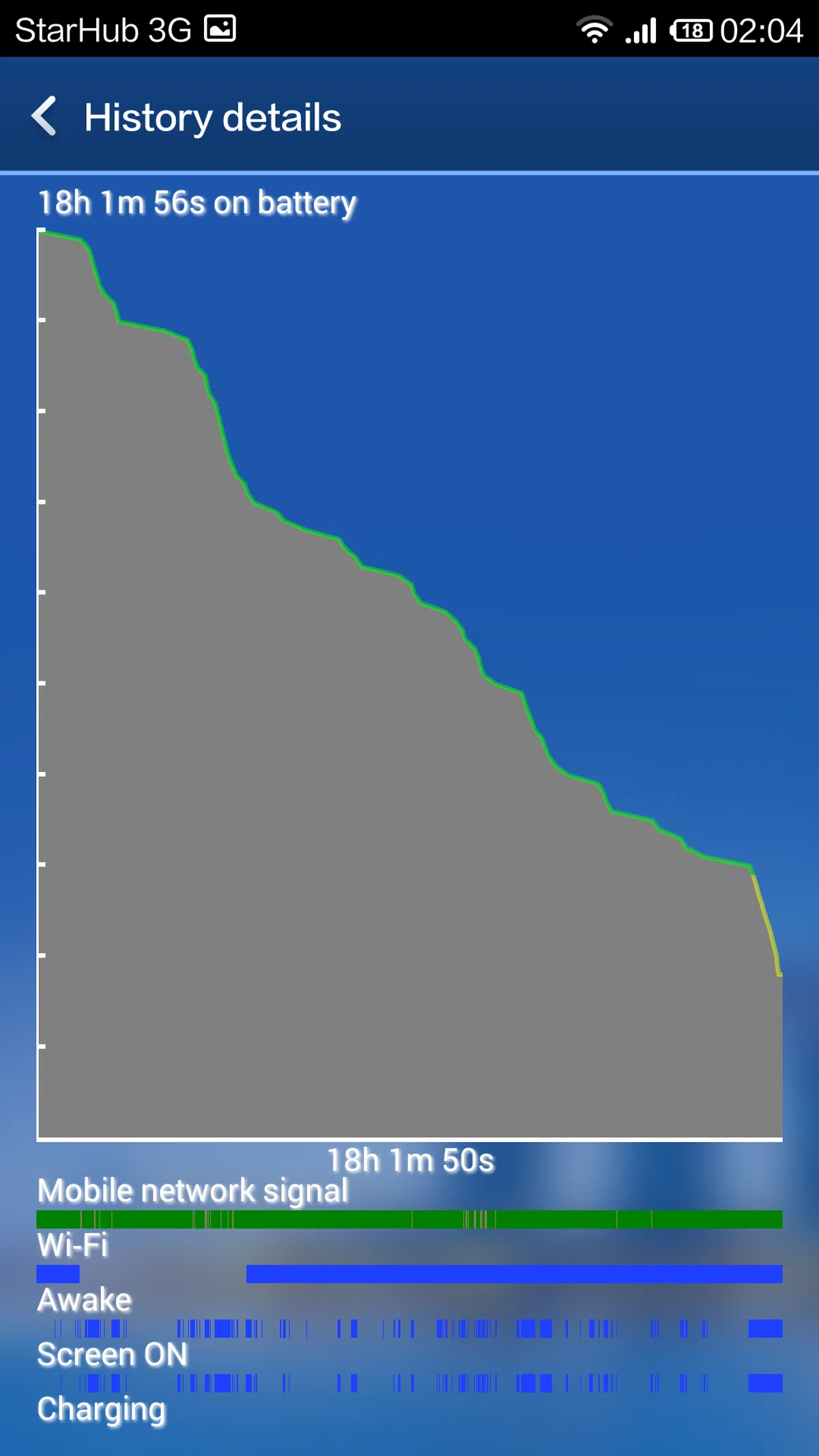 | 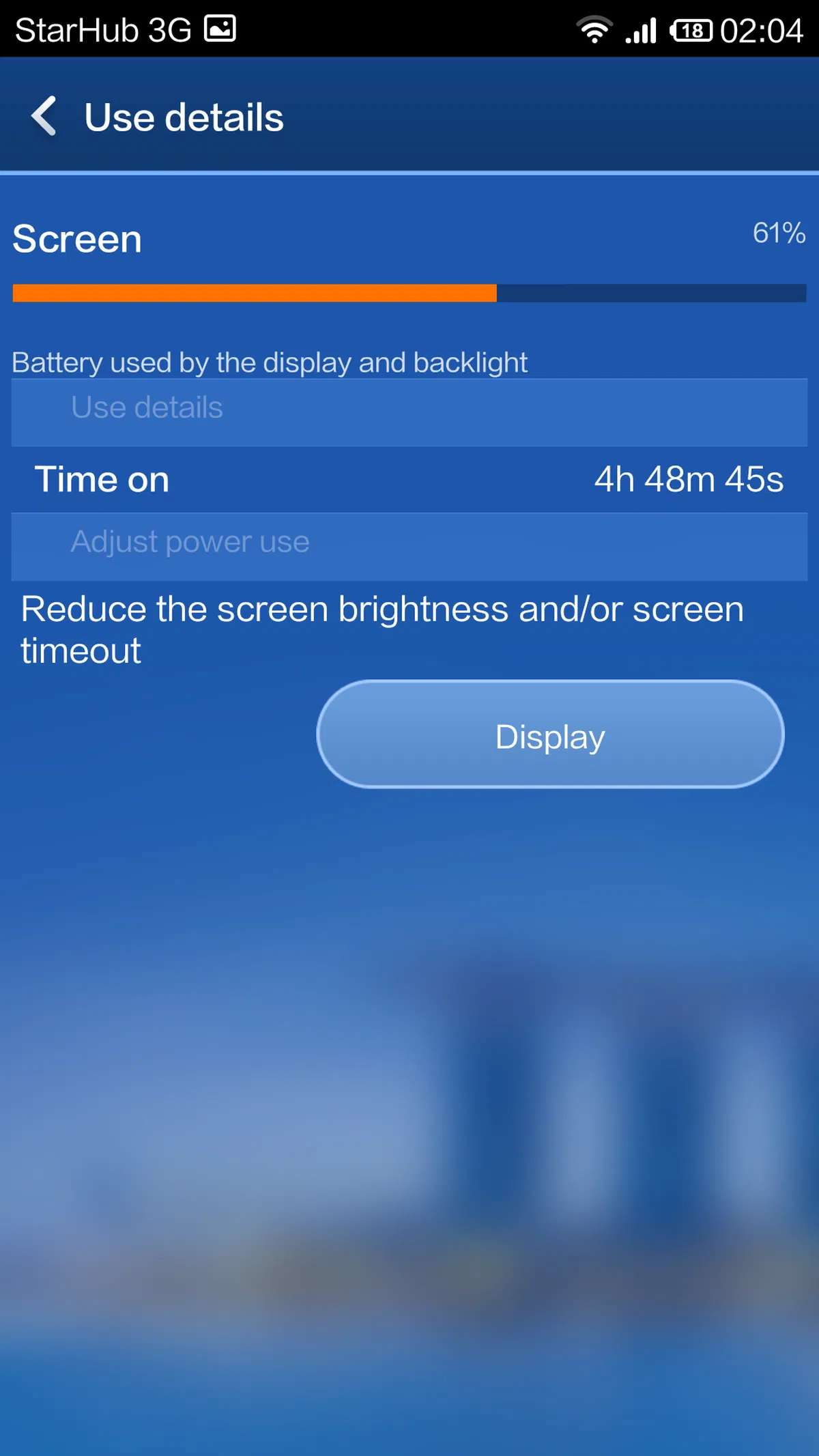 |
As seen from the graphs above, the Mi 3 could last about 18 hours before the battery dipped below 20% . Screen-on time is about 4 hours and 48 minutes. Some notes:
- The device logged onto the 3G network because the Mi 3 does not support 4G LTE connectivity and the SIM card used is a 3G SIM card.
- The device logged onto Wi-Fi connections from time to time.
- Our typical usage scenarios include making some voice calls, texting via WhatsApp, capturing some photos and sharing them on social networking sites, the occasional web browsing via Pulse News Reader and emailing.
Do note that battery mileage varies depending on your usage patterns. For us, the Mi 3 had no problems lasting through a day at work with enough battery juice to last till we plugged in the charger at night.
Conclusion
So does the Xiaomi Mi 3 has what it takes to take on the big boys? In our opinion, the Mi 3 does pose a strong challenge to all other brands and their offerings. Although top devices from Samsung, Sony, LG and more have other premium features that justify their price - be it in the form of software functionality, hardware features, to waterproof design and others - the Xiaomi Mi 3 offers great performance with all the required basic features and at a price point that's delectable. If you require even more out of your device, or just a more premium build, then you would have to look beyond the Xiaomi Mi 3 and consider other top tier offerings.
Aside from its lack of 4G LTE connectivity, no memory card slot and average battery performance, the Mi 3 is a great deal for consumers who want a smartphone with flagship specs without burning a hole in their pockets.
The Mi 3 may not have the premium build and finish of some Android flagship smartphones, but at its price point, it doesn't need to. Its build quality is nonetheless solid and provides good handling. The 5-inch Full-HD display is comparable to the competition, although its screen brightness can be better.
MIUI OS remains the key differentiator for the Mi 3; users have total control over how they want the interface to look and how the phone functions, and software updates are issued on a weekly or monthly basis. This is in stark contrast to the closed system approach of Apple and the OS fragmentation issues faced by other Android vendors.
The Mi 3 (16GB) is available for purchase on Xiaomi's Singapore website tomorrow at 12 noon for S$419 (inclusive of GST and without line contract). At this price point, you would be hard pressed to find any compelling alternative in its category.
The US$349 LG Nexus 5 comes close, but you have to factor in additional costs such as shipping and the lack of warranty coverage. The Nexus 5 has speedy software updates and 4G LTE connectivity (for Japan, Australian and Hong Kong models) to its advantage though. Certain local retailers do carry stock of the phone and as seen here, for a S$550, you do get a phone of comparable performance, but it has 4G LTE support and wireless charging. However, the Nexus 5 doesn't have the ease of customization that the MIUI offers on the Mi 3 device. In our opinion, both devices offer equally good value and it depends what you require on your smartphone.
Another affordable 'flagship' model that you can consider is the Huawei Ascend P6, which boasts an ultra slim side profile of 6.18mm and has a full metal chassis. While its launch retail price is S$638, the street price is more affordable at S$489. Unfortunately, it loses out to the Mi 3 on several performance aspects and it only has a 720p display. Other than its sleek and nice build with microSD support, the Xiaomi Mi 3 offers a more compelling device - for less.
For those who are wondering whether Xiaomi Singapore will sell the 64GB model, it will not be available at launch. However, Hugo Barra did not rule of the possibility of bringing it in if there is sufficient demand.
Our articles may contain affiliate links. If you buy through these links, we may earn a small commission.